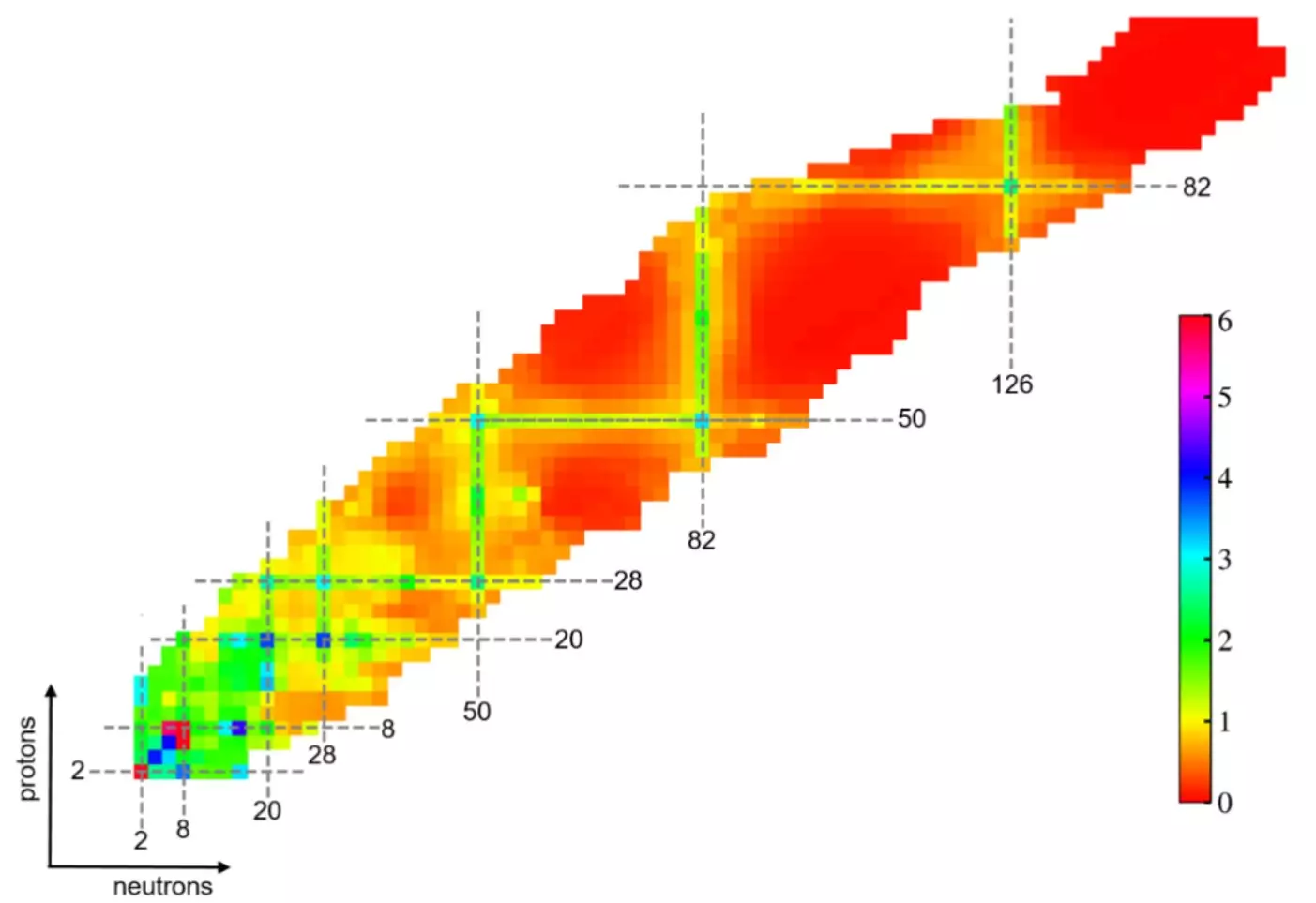

Recent advancements in machine learning have opened new avenues in various scientific fields, including nuclear physics. A collaborative research effort led by the Institute of Modern Physics (IMP) of the Chinese Academy of Sciences, alongside Huzhou University and the University of Paris-Saclay, has utilized these machine learning techniques to scrutinize the evolution of nuclear shell structures, particularly for isotopes that lie far from the stability line. Their findings, shared in Physics Letters B, challenge long-standing notions about the so-called magic numbers—specific quantities of protons and neutrons that endow nuclei with remarkable stability.
Magic numbers are specific numbers of nucleons (protons and neutrons) that result in particularly stable atomic nuclei. These numbers, identified as 2, 8, 20, 28, 50, 82, and 126, represent “closed shells” where nucleons are arranged in a manner that minimizes energy and maximizes stability. The concept first emerged in the 1930s and has since been fundamental in the understanding of atomic structure. The challenge faced by physicists was to determine whether these magic numbers are constant or if their existence might shift as one examines nuclei that are less stable.
Lyu Bingfeng, an associate professor at IMP, poses significant questions surrounding the nature of these magic numbers. The inquiry into whether traditional magic numbers maintain their validity or if new magic numbers appear introduces a layer of complexity that could reshape the theoretical landscape of nuclear physics.
In examining these phenomena, the researchers harnessed the power of machine learning to analyze intricate data concerning the energy levels of excited nuclear states and their transition probabilities. Unlike traditional methods, which often rely on predetermined models with delineated parameters, machine learning provides a flexible approach that adapts to the data itself, offering unprecedented accuracy.
Wang Yongjia from Huzhou University emphasizes the success of the research in achieving high-precision results that outperformed existing nuclear models. The ability to reproduce experimental data accurately for various even-even nuclei marks a significant advancement in nuclear physics. This precision allows researchers to probe deeper into the dynamics surrounding low-lying excited states, effectively bridging the gap between theoretical predictions and experimental findings.
One of the most compelling discoveries from this research is the identification of the disappearing neutron magic number 20 in the nucleus of oxygen-28. This finding contrasts sharply with the persistence of the traditional magic number 50 observed in tin-100, showcasing a duality that paints a more complex portrait of nuclear stability. Such discrepancies underscore the necessity for ongoing research and reinterpretation of established nuclear models.
Moreover, the study posits that fundamental characteristics of nuclei may enhance future machine learning algorithms, potentially refining theoretical frameworks and deepening our understanding of atomic structures. The researchers’ findings are not only significant within the context of nuclear physics but also offer broader implications for experimental methodologies and theoretical predictions in the field.
The insights gleaned from this research present valuable directives for forthcoming experimental undertakings involving low-lying excited energies and electromagnetic transitions. Facilities worldwide, including China’s High Intensity Heavy-ion Accelerator Facility, stand to benefit from understanding how these observed shifts in magic numbers can augment experimental designs and theoretical models.
This study epitomizes the intersection of contemporary technology and classic scientific inquiry. As we continue to untangle the complexities of nuclear structure, machine learning stands as a pivotal tool, enabling physicists to venture beyond conventional boundaries and challenge established norms. The ongoing examination of nuclear magic numbers promises a vibrant landscape for future research, potentially leading to revolutionary insights that redefine our understanding of the atomic nucleus.
Despite the term "rare," rare earth metals (REMs) are not nearly as scarce as their…
A collaboration led by Rutgers University-New Brunswick has initiated a paradigm shift in our understanding…
Natural gas leaks are a growing concern in both urban and rural settings, with potential…
Recent groundbreaking research at the University of Vienna has unveiled a novel interplay of forces…
In recent years, perovskites have garnered significant attention in the fields of materials science and…
For decades, astronomers have probed the depths of the Milky Way, grappling with two perplexing…
This website uses cookies.